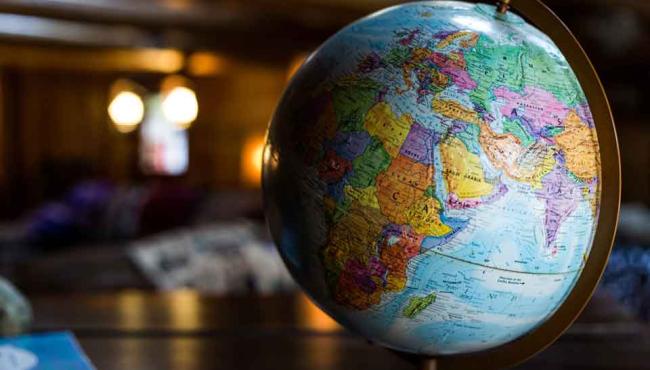" The data needs for the SDGs are great, and time is not on our side. Reliable, timely, accessible and disaggregated geospatial information must be brought to bear to measure progress, inform decision-making and ensure effective and inclusive national and sub-national programs that will chart the path towards the 'Geospatial Way to a Better World', to assist in the implementation of the SDGs, and transform our world for the better."
António Guterres
Secretary-General of the United Nations
(video message to the United Nations World Geospatial Information Congress)
19 November 2018
In the above statement, you might have tripped on the word geospatial. What does it mean? According to Lexico.com it is “relating to or denoting data that is associated with a particular location”. More on that later…
The Secretary General’s assertion holds true for the SDGs (Sustainable Development Goals), as it is impossible to measure SDG indicators without geospatial information. According to a 2020 ECA study, out of the 245 SDG Indicators, 126 (51.4%) need geospatial data.
Geospatial data refers to information regarding objects, events, or phenomena that have a physical position on the earth's surface, as anything that occurs happens somewhere on earth. The location may be static in the short term (e.g., the position of a road, an earthquake event, or children living in poverty) or dynamic (e.g., a moving vehicle or pedestrian, the spread of an infectious disease). Geospatial data includes location information (often, the earth's coordinates), attribute information (the qualities of the item, event, or phenomenon in question), and frequently temporal information (the time or life span at which the location and attributes exist). We can model situations within a computer environment with the input of such geospatial data and propose solutions that are applicable to particular locations.
Geospatial positioning technology is a very important tool to measure and keep track of the changes that are taking place on Earth. One use of it, which many of us may have benefitted from, is for Uber taxi services. They are based on location geospatial data, which helps with pickups, navigation, etc. But it can do much more than bring a taxi to your door.
Turning inaccurate data into accurate data
Often, spatial data isn't very accurate. That’s because of the way the world is seen, measured, and represented. We therefore need to development a geospatial data taxonomy – a description of the geospatial data -- to facilitate better measurement of the SDGs indicators in some selected Africa countries. We can then apply it to the entire continent.
Because Africa does not have adequate access to what Mr Guterres called “high-quality, timely, reliable and disaggregated data”, including geospatial information, the Regional Committee of United Nations Global Geospatial Information Management for Africa (UN-GGIM: Africa), coordinated by the ECA, approved the African Action Plan on Geospatial Information for Sustainable Development covering the period 2016-2030. The vision of the action plan is to advance Africa’s “sustainable development agenda through sound geospatial information management”. The plan talks about “authoritative and evidence-based geospatial information”, which should be “rigorously controlled, best quality and ‘official’ consensus-based geospatial information”. The aim is to provide an “objective, logically-led and uncertainty-free source of decision-making”.
How it works
For the SDGs, the ECA came up with a taxonomy on geospatial data, i.e. we classified and described it. That helps countries develop spatial data that uses the same standards everywhere. This has implications for the measurement of SDGs, as a country like Tanzania, for example, can measure and compare the length of its transport infrastructure -- roads, rails, airports, ports etc. -- with Uganda’s and South Africa’s without any mismatches due to differences in the spatial data. In order to eliminate hunger in a country, the ministry of agriculture can monitor crop growth from planting to harvesting using satellite images across the country. They’d use exact measurements and yield estimates, thereby enabling proper decision making for reaching the SDG goal on eliminating hunger.
Of course, geospatial information must be relevant to the goal, targets and indicators of the SDGs and the spatial data should be accessible and available in a timely manner. This means having meaningful metadata – that’s data about the data: the time, when it was collected, the people involved -- which makes the information easy to find and tells us what it can be used for. For that, of course, geospatial information must meet the right standards.
What we’ve done
Through several regional workshops and advisory services in Namibia, South Africa, Egypt, Burkina Faso, Mali, Cameroon, etc. the ECA has enabled digital census cartography. This has allowed the authorities to capture geospatial data that has improved not only the quality of the censuses but also improved decision- making. How? Because demographic data collected in this way can be used to determine the number of schools, hospitals and banks needed and where to locate them and other public and social amenities. We look forward to helping many other countries take advantage of our work.



Add new comment